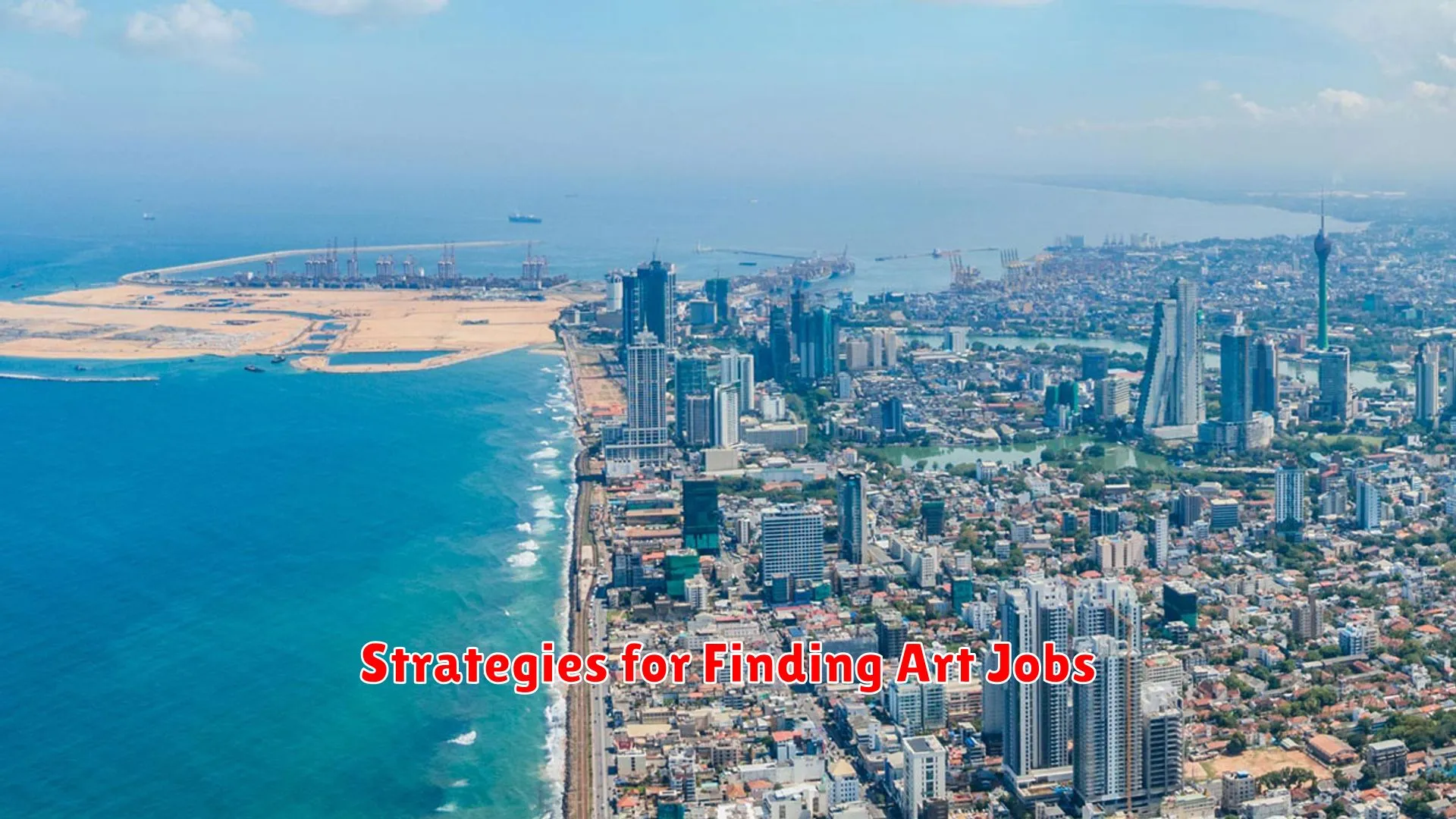
Explore the thriving art and design industry in Sri Lanka and uncover exciting career prospects awaiting talented individuals in this vibrant sector.
Art and Design Industry Overview
The art and design industry in Sri Lanka is a vibrant and rapidly growing sector that offers a plethora of career opportunities for creative individuals. This industry encompasses a wide range of fields including visual arts, graphic design, fashion design, interior design, and more. Professionals in this sector play a crucial role in shaping the cultural landscape of the country and contributing to its economic growth.
Visual Arts: Sri Lanka boasts a rich artistic heritage with a diverse range of traditional and contemporary art forms. Artists in this field create paintings, sculptures, installations, and other visual works that contribute to the country’s cultural identity.
Graphic Design: With the rise of digital media, graphic designers are in high demand to create innovative designs for advertising, branding, publications, and web content. This field offers opportunities for those with a keen eye for aesthetics and technology skills.
Fashion Design: Sri Lankan fashion designers have gained international recognition for their unique and culturally inspired designs. The fashion industry in the country is thriving, providing opportunities for fashion enthusiasts to showcase their creativity and design sensibilities.
Interior Design: As the real estate and hospitality sectors expand in Sri Lanka, the demand for skilled interior designers is on the rise. Interior designers play a key role in creating functional and aesthetically pleasing spaces for residential and commercial projects.
In conclusion, the art and design industry in Sri Lanka presents a dynamic and exciting landscape for individuals passionate about creativity and innovation. By pursuing a career in this sector, aspiring artists and designers can contribute to the cultural richness of the country while also exploring diverse opportunities for personal and professional growth.
Creative Roles Available

In Sri Lanka’s vibrant art and design sector, numerous creative roles are open for aspiring individuals looking to make a mark in the industry. From traditional art forms to modern digital design, there is a diverse range of opportunities to explore.
Graphic Designer: This role involves creating visual concepts to communicate ideas that inspire, inform, and captivate consumers. In Sri Lanka, there is a high demand for talented graphic designers across various industries.
Art Director: Art directors are responsible for the overall visual aspects of an advertising or media campaign and coordinate the work of other artistic or design staff. This role requires a keen eye for detail and creative vision.
Illustrator: Illustrators play a key role in bringing ideas and concepts to life through visual representation. Whether it’s for children’s books, editorial illustrations, or digital content, illustrators are in demand in Sri Lanka.
UI/UX Designer: With the rise of digital platforms, UI/UX designers are crucial in creating engaging and user-friendly interfaces. Individuals with a strong understanding of user experience and design principles are highly sought after.
Art Curator: For those passionate about art history and curation, the role of an art curator involves selecting and presenting artworks for public viewing. This role contributes significantly to promoting local artists and preserving cultural heritage.
These are just a few examples of the creative roles available in Sri Lanka’s art and design sector. Whether you’re a visual storyteller, a digital artist, or a curator of creativity, there are exciting career opportunities waiting to be explored in this dynamic industry.
Necessary Artistic Skills
When pursuing a career in Sri Lanka’s thriving art and design sector, possessing certain artistic skills is crucial to stand out and succeed in the industry. These skills go beyond talent and creativity, encompassing technical proficiency and a strong aesthetic sense.
1. Proficiency in Traditional and Digital Mediums
An artist or designer in Sri Lanka should be adept in working with both traditional mediums such as paint, pencil, and clay, as well as proficient in utilizing digital tools like Adobe Creative Suite. The ability to seamlessly transition between these mediums is highly valued in the industry.
2. Strong Drawing and Visualization Skills
Being able to effectively translate ideas into visual form through sketching and drawing is essential for professionals in the art and design sector. Clear visualization skills aid in communicating concepts to clients and collaborators.
3. Understanding of Color Theory and Composition
A comprehensive knowledge of color theory and composition techniques is fundamental in creating visually pleasing and impactful art and design work. Artists and designers need to understand how colors interact and how to arrange elements harmoniously.
4. Creativity and Innovation
Creativity is at the core of any successful career in the art and design sector. The ability to think outside the box, generate fresh ideas, and innovate is what sets individuals apart and allows them to produce original and compelling work.
5. Attention to Detail and Time Management
Artists and designers must have a keen attention to detail to ensure quality in their work. Additionally, time management skills are crucial in meeting deadlines and delivering projects efficiently in Sri Lanka’s fast-paced art and design industry.
Strategies for Finding Art Jobs

When looking for art jobs in Sri Lanka’s vibrant art and design sector, it’s essential to strategize effectively to increase your chances of securing a desirable position. Here are some key strategies to help you navigate the job market:
Networking
Networking is crucial in the art industry. Attend art exhibitions, workshops, and industry events to meet professionals in the field. Building a strong network can lead to job opportunities through referrals and connections.
Online Platforms
Utilize online platforms dedicated to art and design job postings. Websites like ArtJobs and ArtHire offer listings for various art-related positions. Create a compelling online portfolio to showcase your work and attract potential employers.
Internships and Freelancing
Consider gaining experience through internships or freelancing opportunities. These experiences not only enhance your skills but also make you more attractive to potential employers. Many companies often hire interns or freelancers for permanent roles.
Collaborations
Collaborating with other artists, designers, or organizations can open up new avenues for job opportunities. Working on collaborative projects not only expands your portfolio but also exposes you to different aspects of the art industry.
Continuous Learning
Stay updated with the latest trends and technologies in the art and design sector. Taking courses, attending workshops, or pursuing certifications can enhance your skill set and make you a more competitive candidate for art jobs.
Art Job Interview Preparation
Preparing for a job interview in the art and design sector in Sri Lanka requires a combination of artistic skills, industry knowledge, and a professional demeanor. Here are some key tips to help you ace your art job interview:
1. Showcase Your Portfolio
Ensure your portfolio is up to date and showcases your best work. Highlight your artistic abilities, creativity, and diverse range of skills. Be prepared to discuss each piece in detail, explaining your inspiration and creative process.
2. Research the Company
Before the interview, research the company and its work in the art and design industry. Understand their core values, projects they have worked on, and their target audience. This knowledge will demonstrate your genuine interest in the company.
3. Practice Common Interview Questions
Prepare for common interview questions related to your art background, technical skills, and creative process. Practice articulating your thoughts clearly and concisely. Be ready to discuss your strengths and areas of improvement.
4. Dress Appropriately
Choose an outfit that reflects your personal style while also being professional. Dressing appropriately shows that you respect the interview process and are serious about the opportunity. Avoid loud prints or distracting accessories.
5. Demonstrate Your Passion
During the interview, speak passionately about your art and design journey. Share any relevant experiences, projects, or collaborations that highlight your dedication to the craft. Show enthusiasm for the industry and a willingness to learn and grow.
By following these tips, you can prepare effectively for your art job interview in Sri Lanka and increase your chances of securing a rewarding career opportunity in the art and design sector.
Cultural Aspects of Art Careers

When delving into the diverse world of art careers in Sri Lanka, it is essential to understand the significant cultural aspects that shape and influence the industry. Sri Lanka’s rich history and vibrant cultural heritage have a profound impact on the art and design sector, offering unique opportunities and challenges for individuals pursuing careers in this field.
One key cultural aspect of art careers in Sri Lanka is the deep-rooted tradition of craftsmanship and artisanal skills passed down through generations. Artisans in Sri Lanka often inherit and hone their craft from family members, preserving traditional techniques and knowledge that contribute to the country’s artistic identity.
Furthermore, the country’s diverse cultural heritage, influenced by various ethnicities and religions, provides a rich tapestry of inspiration for artists and designers. From traditional folk art to contemporary interpretations, Sri Lanka’s cultural diversity offers a plethora of motifs, colors, and themes for individuals to explore and incorporate into their work.
Additionally, the close connection between art and spirituality in Sri Lanka adds a deeper layer of meaning to artistic expressions. Many artists draw inspiration from religious and spiritual beliefs, infusing their work with symbolism and cultural references that resonate with local and international audiences.
Art careers in Sri Lanka are also intertwined with societal values and norms, reflecting and challenging prevailing ideologies through creative expressions. The art and design sector serves as a platform for artists to engage in critical dialogues on politics, gender, identity, and social issues, contributing to the cultural discourse in the country.
In conclusion, the cultural aspects of art careers in Sri Lanka play a pivotal role in shaping the industry, offering a rich tapestry of traditions, inspirations, and narratives for individuals embarking on creative pathways in the vibrant art and design sector.
Conclusion
In conclusion, the art and design sector in Sri Lanka offers a promising array of career opportunities for individuals looking to explore their creativity and contribute to the country’s vibrant cultural scene.












